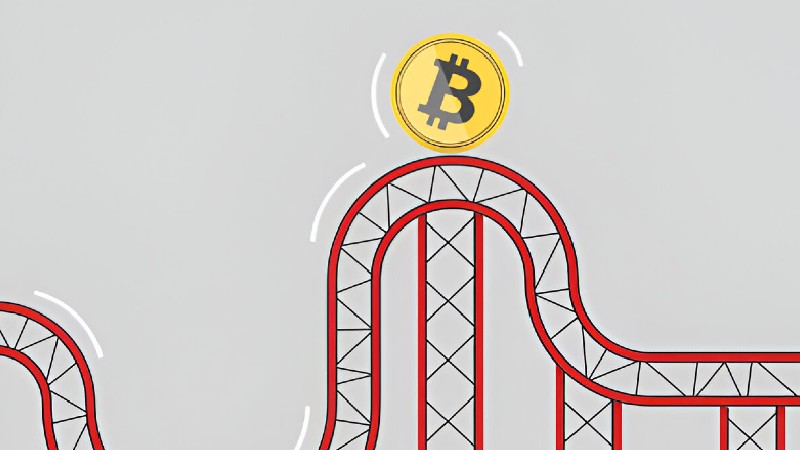
The Market’s Roller Coaster: Explaining the Day’s Stock Market Fluctuations in Simple Terms
The stock market is often described as a roller coaster thrilling, unpredictable, and sometimes stomach-churning. For both new and seasoned investors, daily market fluctuations can be confusing and emotionally taxing. Understanding why stocks rise and fall in simple terms can help investors make better decisions and stay focused on long-term goals.
What Causes Daily Market Fluctuations?
Stock market prices change every day due to a combination of factors. While long-term trends are driven by economic growth, corporate performance, and innovation, daily fluctuations are often influenced by short-term events. Some key causes include:
- Economic Data Releases: Reports on employment, inflation, GDP, and consumer spending can immediately impact investor sentiment.
- Corporate Earnings: Companies releasing quarterly results can cause their stock prices to surge or fall, affecting broader indices if the companies are influential.
- Geopolitical Events: Trade tensions, conflicts, or political instability create uncertainty, often leading to volatility.
- Central Bank Actions: Interest rate changes and monetary policy decisions can shift investor expectations and market movements.
- Investor Sentiment: Fear and greed drive short-term buying and selling, amplifying market swings.
Understanding Market Volatility with Simple Analogies
Think of the market like weather. Some days are sunny (bullish), some are stormy (bearish), and occasionally, there are sudden thunderstorms (sharp drops). Just as weather changes don’t indicate the end of the season, daily market swings don’t necessarily signal long-term declines.
The Emotional Roller Coaster
Investor emotions amplify volatility. Fear can trigger panic selling during downturns, while overconfidence can lead to buying at peaks. Psychologists call this the behavioral bias of loss aversion: losses feel about twice as painful as gains feel pleasurable.
Historical Example
| Date | Event | Market Movement |
|---|---|---|
| October 24, 1929 | Stock market panic, start of Great Depression | -11% |
| March 15, 1933 | Emergency Banking Act stabilizes failing banks | +15% |
These examples illustrate how a single day can produce dramatic movements, while long-term growth often continues.
Why Trying to Time the Market Can Backfire
Many investors believe they can buy low and sell high by predicting market swings. In reality, this is extremely difficult and often counterproductive.
- Studies show missing even a few of the market’s best days significantly reduces long-term returns.
- For instance, $10,000 invested in the S&P 500 from 2003 to 2018 could have grown to $30,000 if fully invested. Missing just the 10 best days during that period would reduce it to under $16,000.
The lesson: staying invested and maintaining a disciplined strategy typically outperforms attempts at timing the market.
Micro-Triggers and Daily Market Psychology
Beyond standard explanations like earnings reports or economic data, there are subtle daily factors — micro-triggers — that influence stock prices. These include:
- Algorithmic Trading: High-frequency trading reacts to news within milliseconds, amplifying volatility.
- Social Media Sentiment: Tweets, blogs, and online discussions can sway short-term market sentiment.
- ETF Flows: Large inflows or outflows from Exchange-Traded Funds can create immediate pressure on underlying stocks.
- Market Liquidity: Thinly traded stocks or sectors are more susceptible to rapid price swings.
Recognizing these micro-triggers helps investors understand that not every fluctuation is driven by fundamental business performance.
Strategies to Navigate Daily Fluctuations
Even with micro-triggers and short-term volatility, there are practical strategies investors can employ:
1. Diversification
Spread investments across multiple asset classes, sectors, and geographies to reduce the impact of a single day’s decline.
2. Dollar-Cost Averaging (DCA)
Investing a fixed amount regularly allows buying more shares when prices are low and fewer when prices are high, smoothing out the effects of volatility.
3. Focus on Quality Investments
Companies with strong fundamentals, healthy cash flows, and low debt tend to weather market fluctuations better than speculative stocks.
4. Maintain an Emergency Fund
Having liquidity ensures that you don’t have to sell long-term investments during a downturn.
5. Keep a Long-Term Perspective
Historical data confirms that, despite short-term volatility, markets have trended upward over decades. The Nasdaq grew over 400% from 1998 to 2018, even across two major downturns.
Psychological Tips for Daily Market Swings
Managing emotions is just as important as financial strategy. Here are techniques to stay calm during market roller coasters:
- Track Long-Term Goals: Focus on your 10-, 20-, or 30-year plan instead of daily movements.
- Avoid Constant Checking: Daily monitoring can amplify stress and emotional decision-making.
- Keep a Volatility Journal: Note your reactions to market swings and review patterns over time to improve decision-making.
Riding Out a Short-Term Drop
During the COVID-19 market drop in March 2020, stocks fell over 30% in just six weeks. Investors who panicked and sold lost significant gains. Those who stayed invested and even added to positions saw rapid recovery within months. This highlights how disciplined investing through turbulence can turn uncertainty into opportunity.
Quick Takeaways
- Daily market swings are normal; long-term growth matters most.
- Trying to time the market is risky and often reduces returns.
- Micro-triggers like algorithmic trading and social sentiment impact short-term fluctuations.
- Diversification, dollar-cost averaging, and quality investments help manage volatility.
- Focus on long-term goals and emotional discipline to ride the market’s roller coaster successfully.
By viewing market fluctuations through both practical and psychological lenses, you can transform the day’s ups and downs from a source of stress into an opportunity for disciplined growth.
Conclusion
Daily stock market fluctuations can feel unpredictable and stressful, but they are a natural part of investing. By understanding the causes, recognizing micro-triggers, staying diversified, and focusing on long-term objectives, investors can navigate volatility confidently.
Remember: it’s not about avoiding the ups and downs — it’s about riding them with discipline, strategy, and a clear mind.
Frequently Asked Questions (FAQs)
What causes the stock market to fluctuate daily?
Daily fluctuations are caused by economic reports, corporate earnings, geopolitical events, central bank policies, and investor sentiment. Even minor news can trigger short-term volatility.
How can I protect my investments from daily market swings?
Diversification across asset classes, dollar-cost averaging, investing in quality companies, and maintaining an emergency fund can help manage the impact of short-term market volatility.
Is it possible to time the market?
Timing the market is extremely difficult and often counterproductive. Missing even a few of the best-performing days can significantly reduce long-term returns. Staying invested is usually the most effective strategy.
What is market volatility and why does it happen?
Market volatility measures how much prices rise or fall over time. It happens due to news, economic data, investor sentiment, or large trading flows. Volatility is natural and creates both risk and opportunity.
How should I react to a sudden market drop?
Instead of panicking, assess your risk tolerance, stick to your long-term plan, and consider strategies like tax-loss harvesting or reinvesting dividends. Sudden drops often precede market recoveries.









